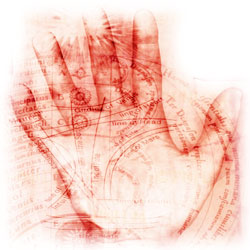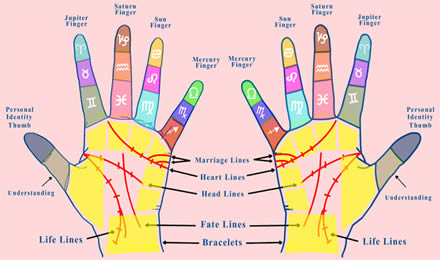Judging by the number of hands painted in prehistoric caves it would seem that palmistry held a interest for humans since the stone age. Archaeological discoveries have discovered hands made of stone, wood and ivory by ancient civilizations. The emperor of china used his thumbprint when sealing documents in 3000 bc. Information on the laws and practise of hand reading have been found in vedic scripts, the bible and early semitic writings. Aristotle (384-322 bc) discovered a treatise on palmistry on an alter to the god hermes. The greek physicians Hippocrates and Galen (ad 130-200) were both knowledgeable about the use of palmistry as a clinical aid. Julius Caesar (102-44bc) judged his men by palmistry. Notable people such as Paracelsus (1493-1541) and Fludd (1574-1637) brought respectability to palmistry through their writings. Later Dr Carl Carus, physician to the king of saxony in the 19th century matched palms to personality. Advances in genetics, psychology and forensics have propelled palmistry into the modern age. In 1901 Scotland yard adopted the technique of fingerprinting in criminal investigation and identification.
Medical researchers studying skin patterns (dermatoglyphics), have discovered a correspondence between genetic abnormalities and unusual markings in the hand. Research has confirmed a link between specific fingerprint patterns and heart disease. These days palmistry is well accepted throughout the world. Professional palmists can be found reading palms in every country in the world. Pick up almost any copy of a women’s magazine and there is some information on palmistry. There are thousands of books written on the subject and there are palmistry clubs the world across.
You may write your queries to us on Contact Us.



